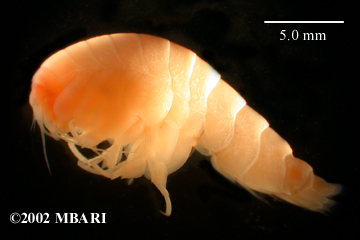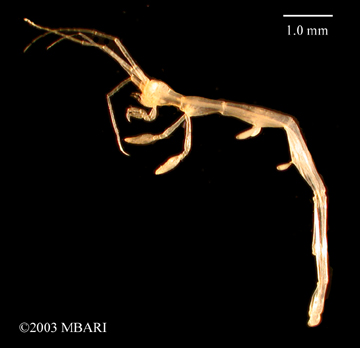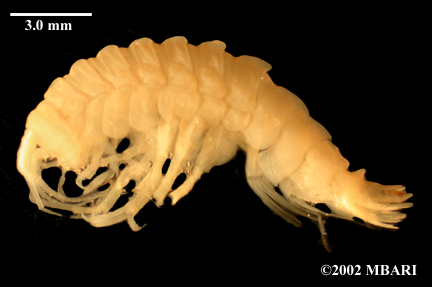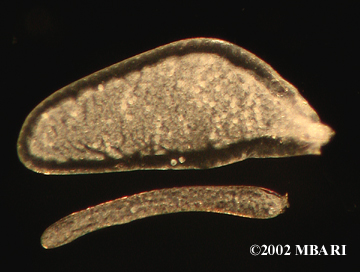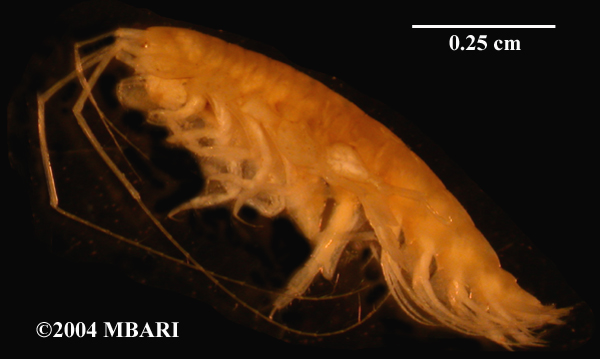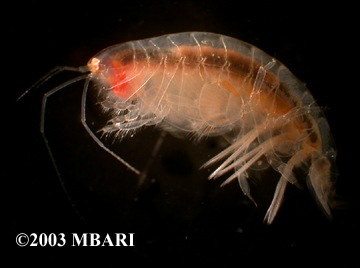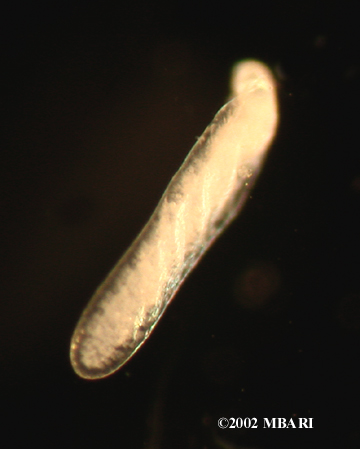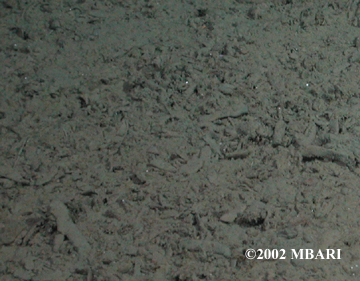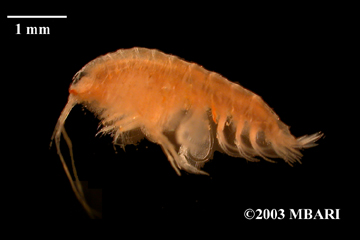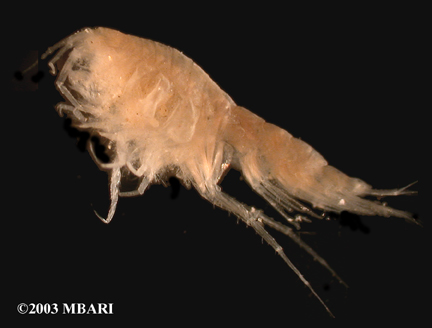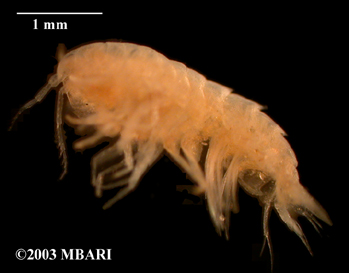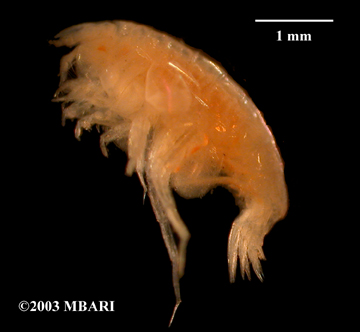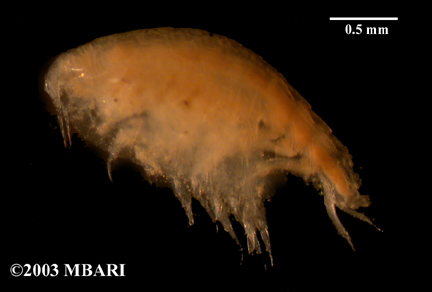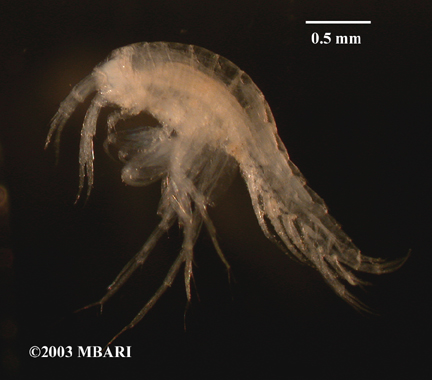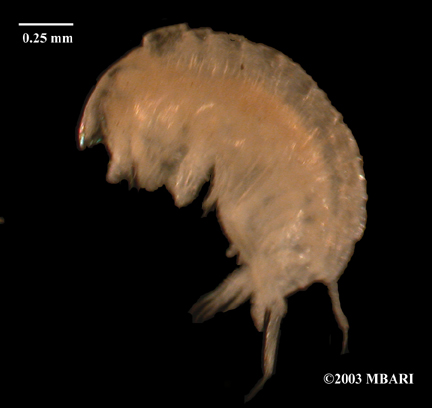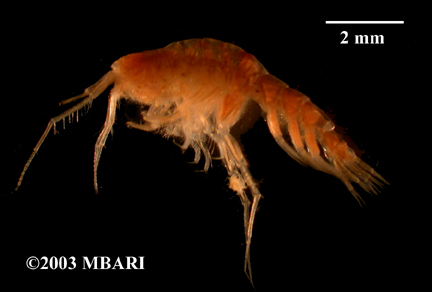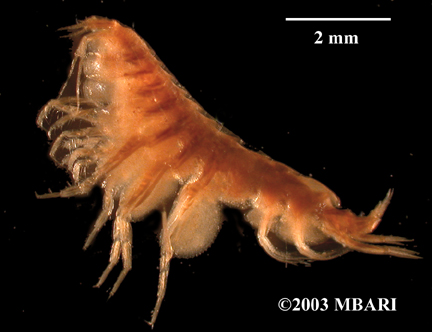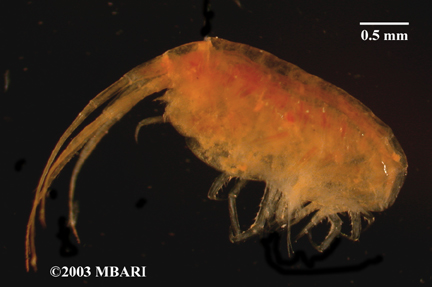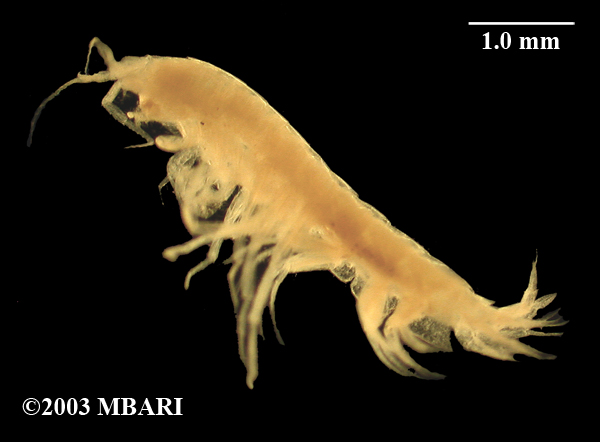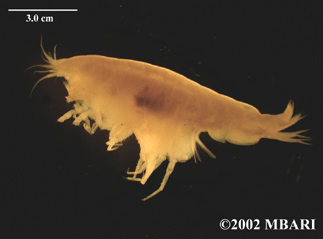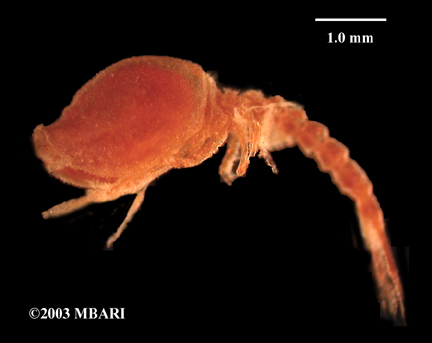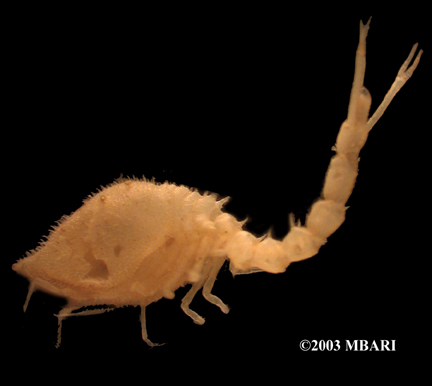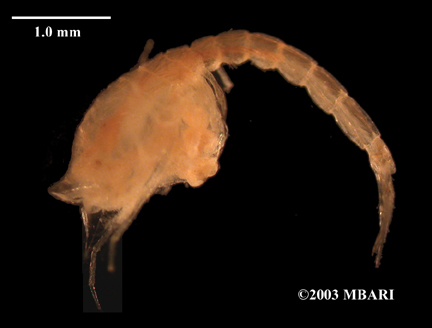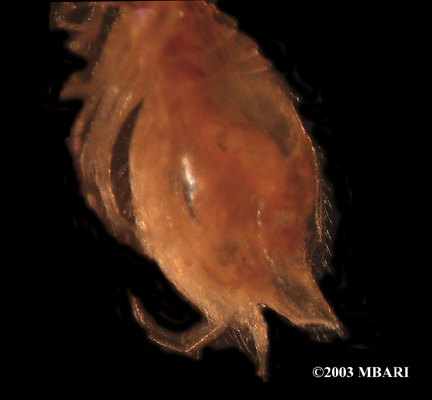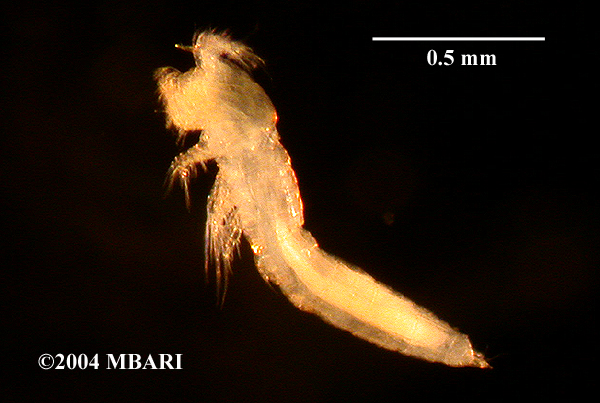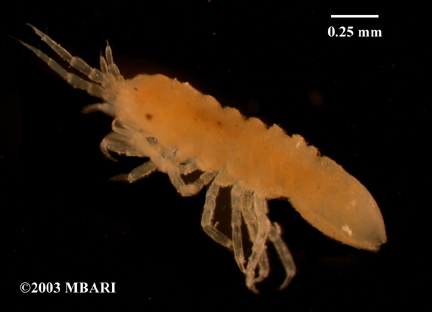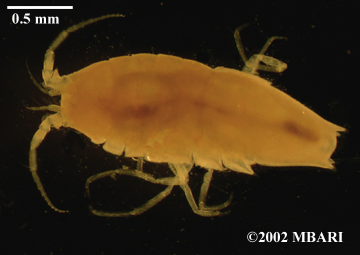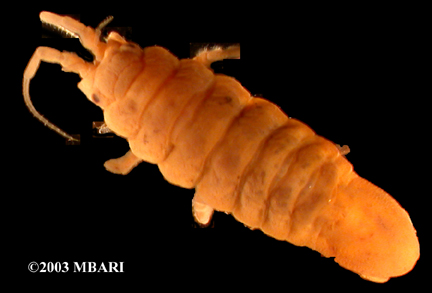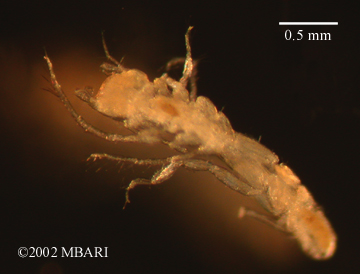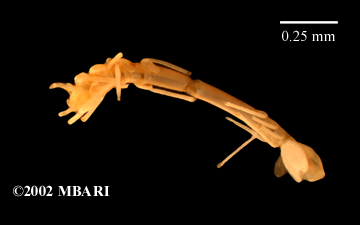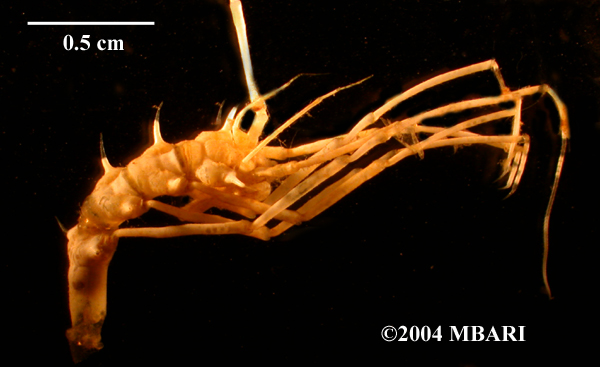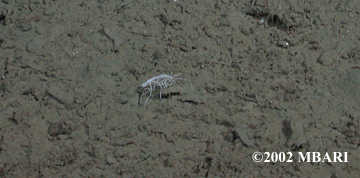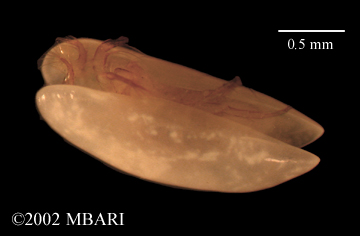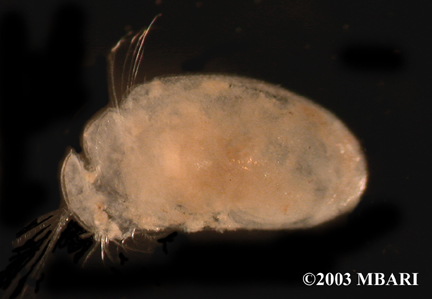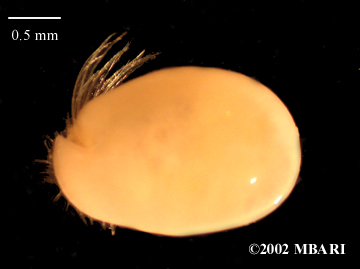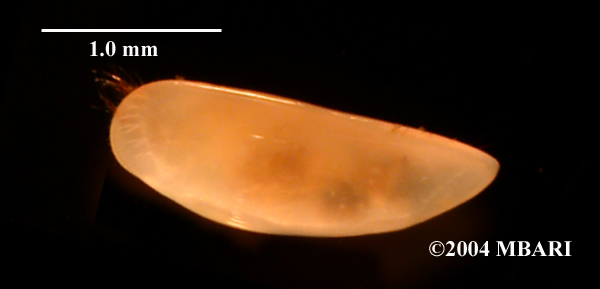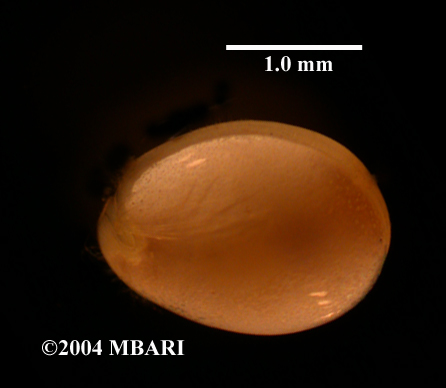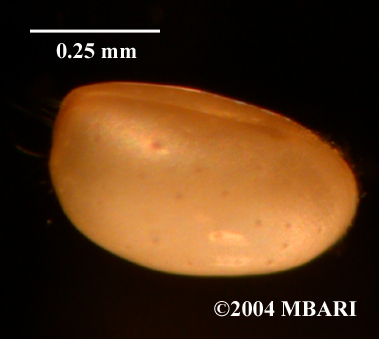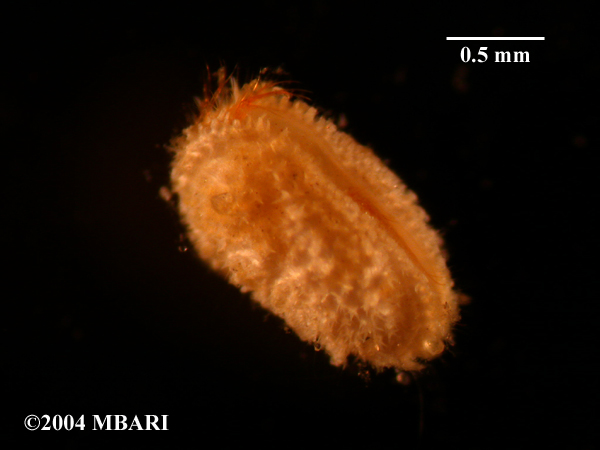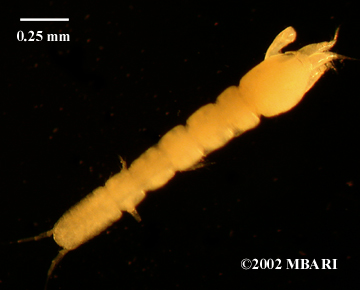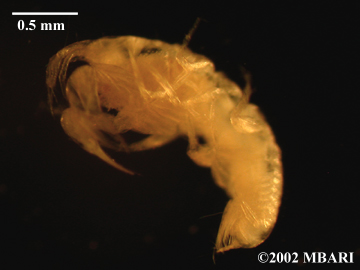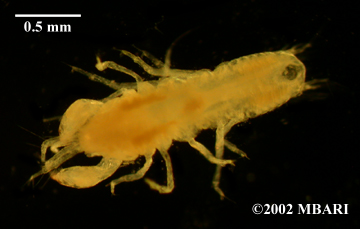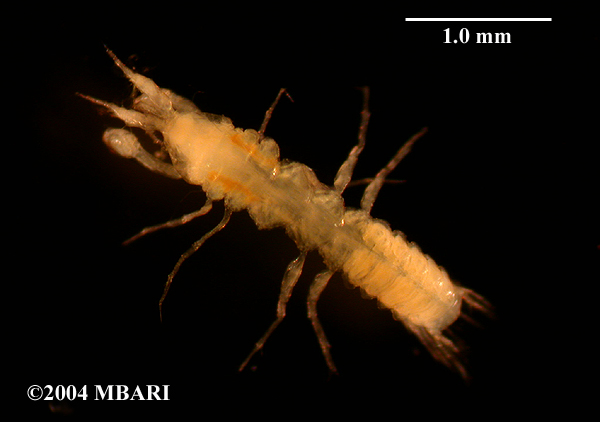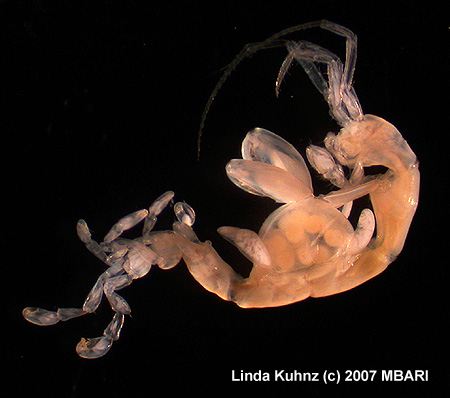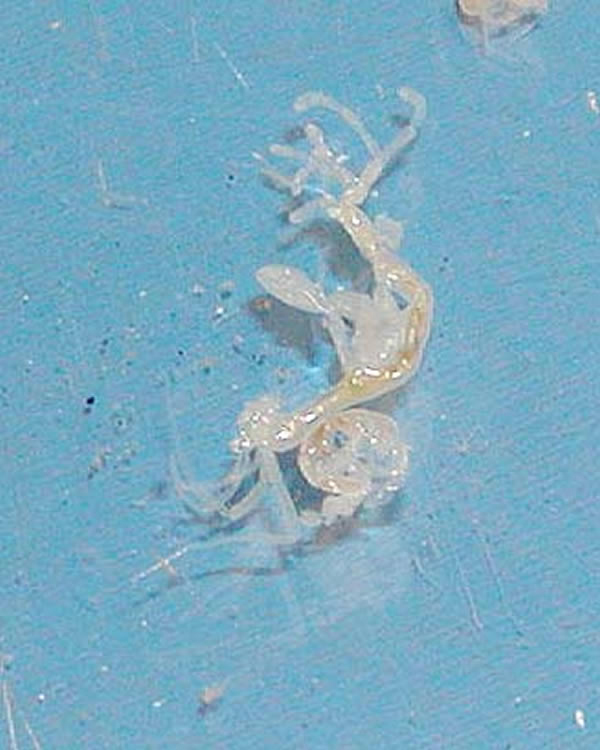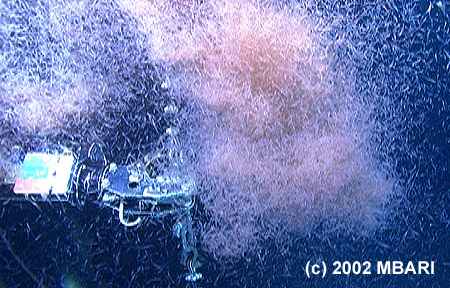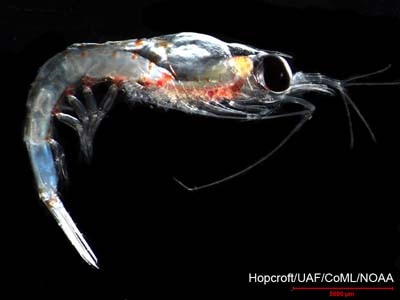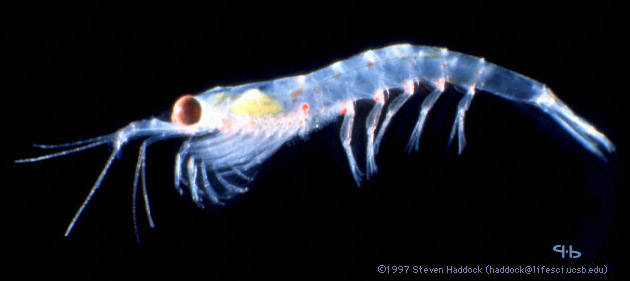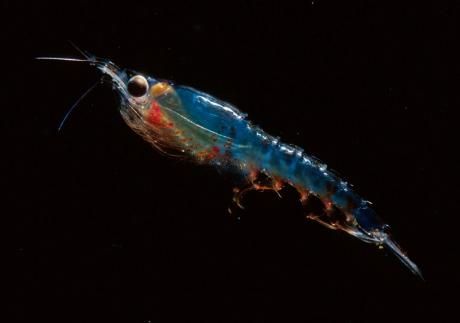 | Monterey deep-sea offshore fauna -Crustacea |
|
Deep-Sea Amphipods -? Eurythenes grillus |
Deep-Sea Amphipods-Mayerella sp |
Deep-Sea Amphipods-Valettiopsis concava |
|
Deep-Sea Amphipods -Haploops lodo female gill and oostegite |
Deep-Sea Amphipods-Haploops lodo |
Deep-Sea Amphipods-Ampelisca unsocalae -1040m |
|
Deep-Sea Amphipods-Haploops lodo male pleated gill |
Haploops lodo sediment tubes on the seafloor 3600 m |
Deep-Sea Amphipods-Ampelisca unsocalae Family Ampeliscidae |
|
Deep-Sea Amphipods -Bathymedon kassites Family Oedicerotidae |
Deep-Sea Amphipods-Bruzelia ?tuberculata Family Synopiidae |
Deep-Sea Amphipods-Harpiniopsis epistomata Family Phoxocephalidae |
|
Deep-Sea Amphipods-Lepidepecreum serraculum Family Lysianassidae |
Deep-Sea Amphipods-Juvenile Listriella sp Family Liljeborgiidae |
Deep-Sea Amphipods-Harpiniopsis ?emeryi Family Phoxocephalidae |
|
Deep-Sea Amphipods -Bathymedon pumlis Family Oedicerotidae |
Deep-Sea Amphipods-Hippomedon columbianus Family Lysianassidae |
Deep-Sea Amphipods-Metopa dawsoni Family Stenothoidae |
|
Deep-Sea Amphipods-Amphipoda sp |
Deep-Sea Amphipods -?Hippomedon columbianus Family Lysianassidae |
Deep-Sea Cumaceans -Campylapsis sp |
|
Deep-Sea Cumaceans-Leptostylis sp |
Deep-Sea Cumaceans-Diastylis sp |
Deep-Sea Cumaceans-Leucon magnadentata (brooding female) |
|
Deep-Sea Cumaceans-Leucon magnadentata |
Deep-Sea Harpacticoids |
Deep-Sea Isopods -Synidotea sp. |
|
Deep-Sea Isopods-Haploniscidae |
Deep-Sea Isopods-Synidotea calcarea |
Deep-Sea Isopods-Desmosomatid sp |
|
Deep-Sea Isopods-Ischnomesid |
Deep-Sea Isopods-Ischnomesid |
Ischnomesid |
|
Deep-Sea Ostracodes -Podocopid Ostracod Macrocyprididae? |
Deep-Sea Ostracodes (Ostracods) -Myodocopida sp |
Deep-Sea Ostracodes (Ostracods) -Cylindroleberidinae probably Parasterope |
|
Deep-Sea Ostracodes (Ostracods) |
Deep-Sea Ostracodes (Ostracods) |
Deep-Sea Ostracodes (Ostracods) |
|
Deep-Sea Ostracodes (Ostracods) |
Deep-Sea Tanaids |
Deep-Sea Tanaids |
|
Deep-Sea Tanaids |
Deep-Sea Tanaids |
Skeleton shrimp.This strange-looking animal is a caprellid amphipod (also known as a skeleton shrimp) that lives on the mouthparts of deep-sea crabs. This particular animal was found clinging to a crab that MBARI researchers collected from the floor of Monterey Canyon, about 2,500 meters (8,200 feet) below the ocean surface. Inside the transparent body of this 8-millimeter (1/3-inch) female Caprella bathytatos you can see a clutch of eggs. Marine biologist Linda Kuhnz captured this pregnant amphipod using a camera attached to a microscope. Kuhnz spends hours using a microscope to find, catalog, and photograph the many tiny animals that live in seafloor sediment |
|
Skeleton shrimp, Caprella bathytatos, collected from the mouthparts of the deep sea spider crab. The crab was collected on Alvin dive 3807 at Warwick Seamount (Alaska) -http://oceanexplorer.noaa.gov/explorations/02alaska/logs/jul12/jul12.html |
Krill swarm.A pod of dolphins, a school of fish, a smack of jellies... Many marine organisms form aggregations. Some swarms contain thousands or even millions or animals. Euphuasiids (krill), like those in the picture above, can create swarms so dense that they turn the surface of the ocean pinkish-red. They are key players in California''s coastal ecosystem, providing food for everything from small seabirds to blue whales. This particular swarm contains a mix of Euphausia pacifica and Thysanoessa spinifera, the two most common species of krill found around Monterey Bay. They were attracted to the lights on MBARI''s remotely operated vehicle (ROV) Ventana while the ROV was working on research instruments in Monterey Canyon. Some parts of this swarm were so dense that the animals could no longer swim. They simply tumbled through the water, so that the swarm billowed and then collapsed like a cloud of smoke |
Euphausiids are commonly called krill. After the copepods, euphausiids often rank second or third in terms of abundance in most oceanic waters, but are not common in the arctics central basins. As adults they range in size from 1-15 cm in body length, almost classifying as nekton (swimmers like fish) rather than plankton (drifters). Many of the species within this group undergo pronounced daily migrations spending the day at several hundred meters depth and coming to the surface to feed each night. They often form dense swarms that make them very patchy in terms of their overall distribution. They are a major food item for many other larger planktonic species, fish, sea-birds, seals, and the baleen whales-http://www.sfos.uaf.edu/sewardline/ZoopSpecies/Euphausiids.html |
|
Euphausia pacifica is a small vertically migrating species of krill. It is not clear whether the luminescence, concentrated in photophores along the bottom of the body, is used for counterillumination. (Length approx. 2 cm)-http://www.lifesci.ucsb.edu/~biolum/organism/pictures/euphausiid.html |
Thysanoessa spinifera |
from MBARI -http://www.mbari.org/benthic/fauna.html
About cold seeps -http://www.mbari.org/benthic/coldseeptour.htm
CRUSTACEA
Amphipods
Cumaceans
Harpacticoids
Isopods
Ostracods
Tanaids
http://www.mbari.org/benthic/fauna.html
Animal divercity web -http://animaldiversity.ummz.umich.edu/site/accounts/classification/Synopiidae.html
More images -http://www.mbari.org/news/feature-image/feature-image-gallery.html
See http://en.wikipedia.org/wiki/Skeleton_shrimp skeleton shrimp
http://www.sfos.uaf.edu/sewardline/ZoopSpecies/Euphausiids.html -krill
Polychaeta
Mollusca
Echinodermata
Foramimiferans and Others Groups
Animal galery
